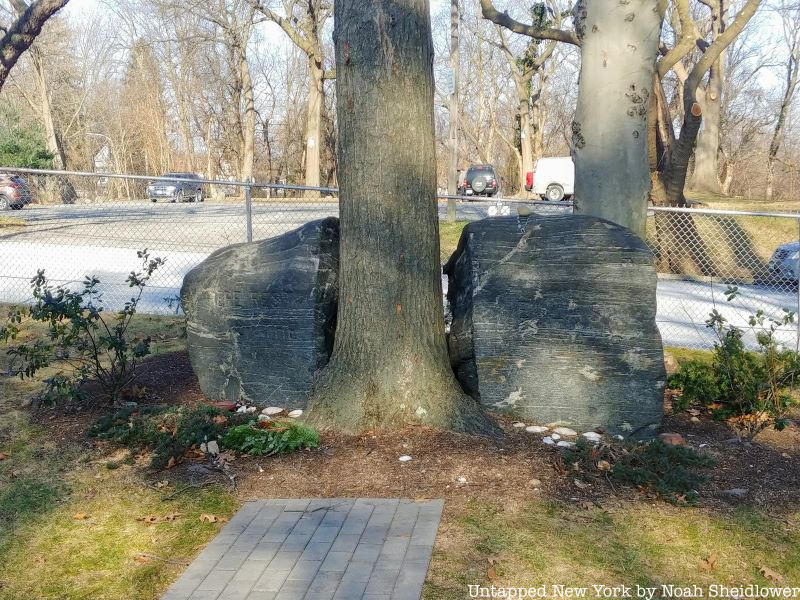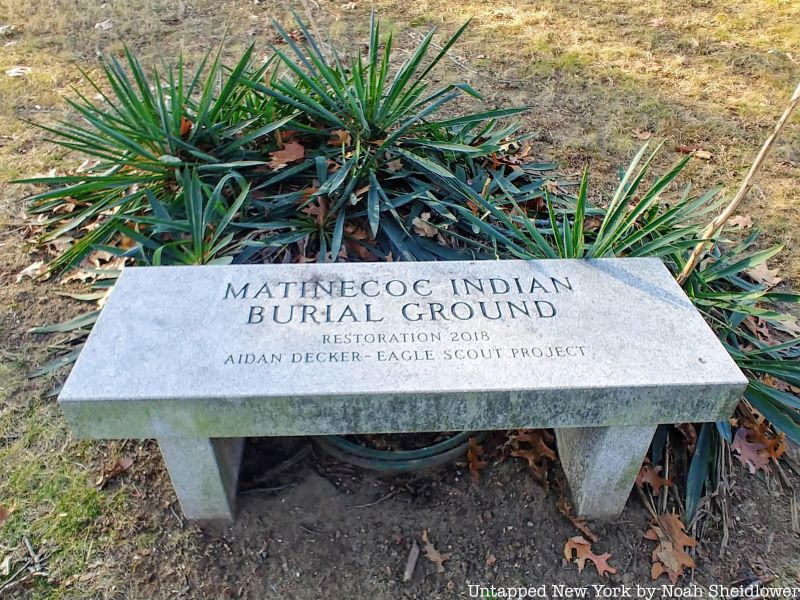7. A Native American cemetery was located at modern-day Zion Episcopal Church

For the last century or so, Zion Episcopal Church’s churchyard has been preserved, including weathered markers of families who helped found the church and some notable markers for Caroline Bissell and Mary Buhrman. Two men from Mark Twain’s Innocents Abroad are also buried at the cemetery; one of the more notable graves belongs to Bloodgood Haviland Cutter, who helped expand the churchyard and was described by Twain as a “simple-minded, honest, old-fashioned farmer with a strange proclivity for writing rhymes.” The cemetery’s cedar trees tower over Northern Boulevard below and stand near other graves.

One of the most fascinating parts of the churchyard is the Matinecock reburial site. On November 1, 1931, about 30 bodily remains of the area’s Matinecock tribe were reinterred at the churchyard after their original resting place was disturbed by the expansion of Northern Boulevard. The decision to expand the road to four lanes was met with significant pushback, especially from the local Native American communities. The remains at the original burial ground were removed and reburied at the Zion Episcopal churchyard alongside a stone inscription that reads, “Here rest the last of the Matinecoc.” In 2018, Chief Harry Wallace led a homecoming burial ceremony at the site after more Matinecock remains were repatriated from the Museum of Arts and Sciences in Florida.





